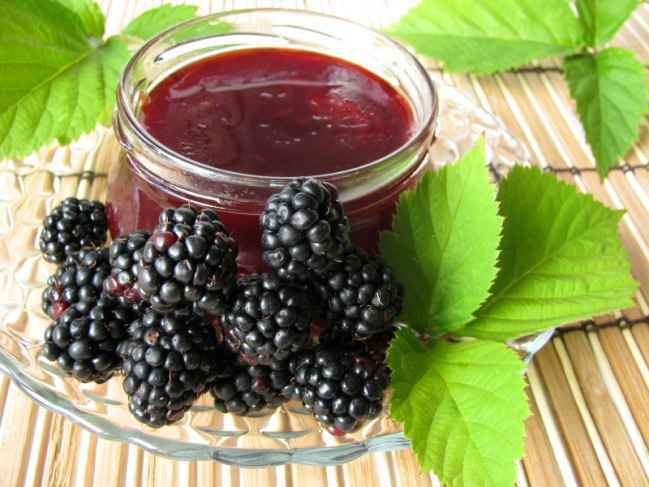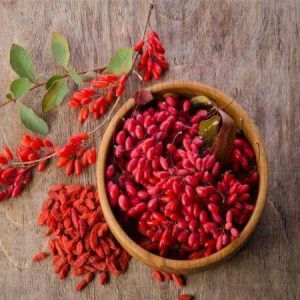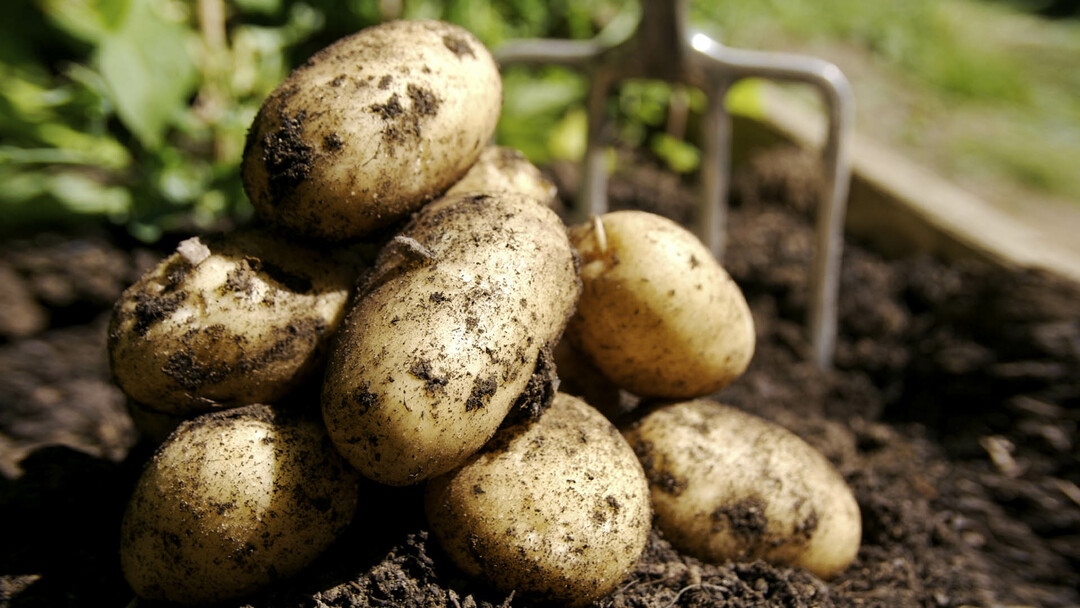What is good for the intestines. Foods that have a good effect on it, is it possible for a watermelon with a rotovirus, what can be eaten with a rotovirus
The intestine is one of the main organs that ensure proper digestion and assimilation of vitamins and minerals that a person receives from food.

The structure of the human intestine
The provision of cellular nutrition (absorption of beneficial and nutritious substances occurs in the small intestine), the functioning of the immune system, the work of the heart and the elasticity of the blood vessels. Prevention of bowel disease is also necessary to prevent dehydration, as water and other liquids are absorbed by the mucous membranes of the colon, from where they enter the bloodstream and are carried throughout the body.
In order for the gastrointestinal tract to work properly, preventive measures must be followed. What is good for the intestines, and what measures will make it "work" in full force, will be discussed below.
Content
- 1 Dietary fiber: what it is and how it affects bowel function
- 2 How much fiber does a person need per day?
- 3 How to Increase Coarse Fiber in Your Diet: Helpful Tips
- 4 Colon Cleansing & Motility Products
-
5 5 healthiest foods for your gut
- 5.1 Nuts
- 5.2 Bananas
- 5.3 Kefir
- 5.4 Kelp
- 5.5 Flax-seed
-
6 Salad "Brush" for intestines
- 6.1 How to cook?
-
7 How to make your intestines work: three simple rules
- 7.1 Rule one: more water!
- 7.2 Rule two: more movement!
- 7.3 Rule three: less nerves!
- 7.4 Video - What is good for the intestines
Dietary fiber: what it is and how it affects bowel function
Coarse dietary fiber (plant fiber) is an indispensable component for those who want to normalize digestion and improve the motility of the intestinal walls.

Vegetable fiber rye bran
They are especially useful for people with lazy bowel syndrome, weakened gastrointestinal motility, and a sedentary lifestyle. Dietary fiber consists of the following compounds: polysaccharides and lignin - a complex polymeric substance that is found in large quantities in many plants and algae. Once in the human gastrointestinal tract, plant fiber is processed by bacteria that inhabit the intestinal mucosa, but when it does not undergo breakdown by digestive enzymes and biologically active fluids, that is, it is excreted from the body unchanged form.
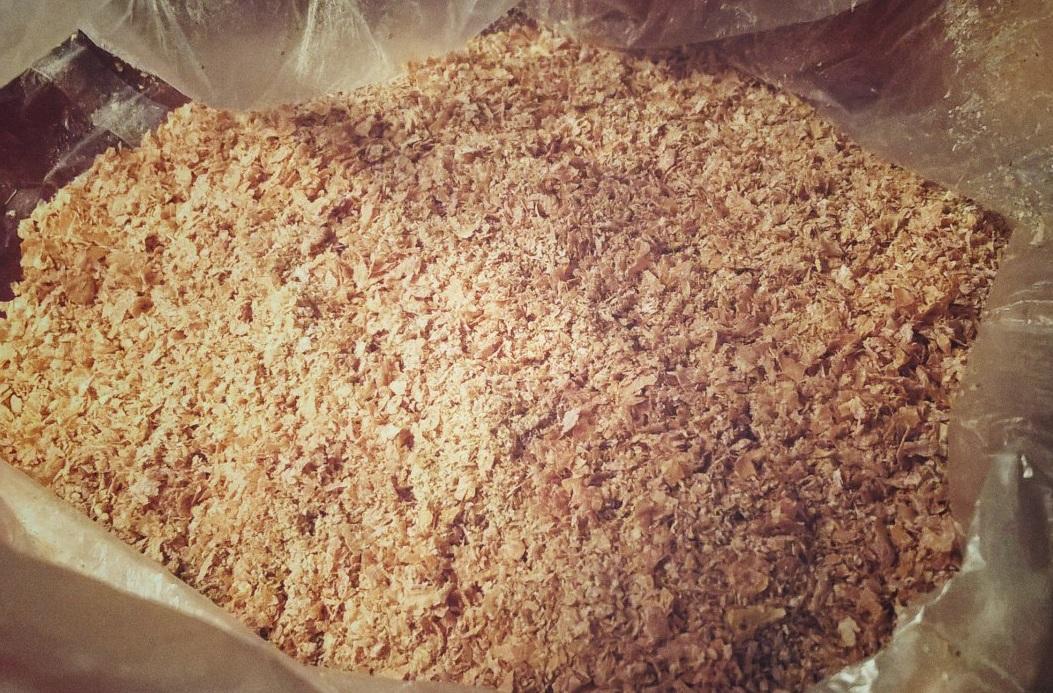
Vegetable fiber is excreted from the body unchanged
Regular inclusion of vegetable fiber in the diet will allow not only to improve the functioning of the intestines, but also to improve health, since this product has a number of useful properties. Among them:
- removal of decay products, allergens, toxic substances and toxins from the body;
- irritation of receptors located in the mucous membranes of the small and large intestines, which helps to stimulate motor function;
- improved absorption of vitamins and other nutrients;
- stimulating the growth of its own beneficial microflora by creating a nutrient medium for lacto- and bifidobacteria;
- decreased appetite.

Eating Fiber May Reduce Appetite
Fiber-rich foods are recommended to be included in the menu for people who are overweight, as well as for people with diseases of the heart, blood vessels and the endocrine system.
Note! Dietary fiber helps to lower sugar and eliminate "bad" cholesterol from the body.
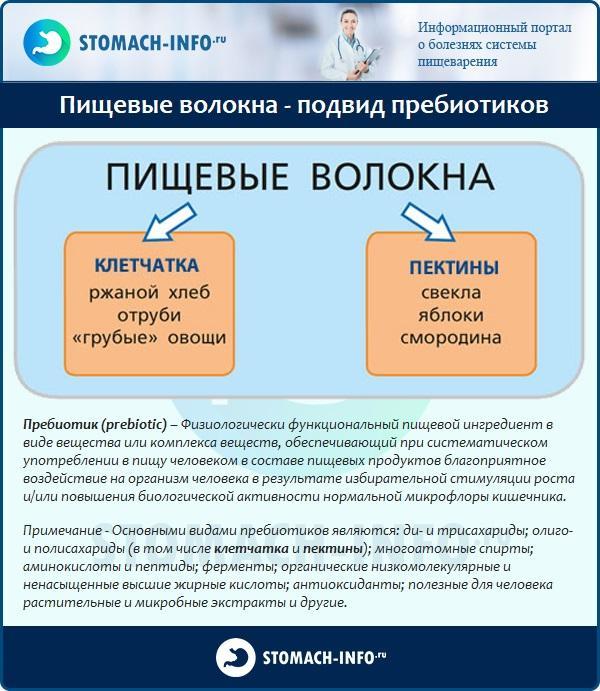
Dietary fiber - a subtype of prebiotics
How much fiber does a person need per day?
The main source of coarse fiber is rye or wheat bran. One serving of crispy bran (50 g) provides almost a daily intake of fiber for an adult - about 21-22 g. The norms for adolescents, the elderly and pregnant women are shown in the table.
Table. Vegetable fiber consumption rates.
| Person category | Daily intake of dietary fiber (g) |
|---|---|
 Children from 3 to 10 years old |
10-12 |
 Children over 10 years of age and adolescents |
12-18 |
 Elderly and senile persons (over 50 years old) |
28-35 |
 Pregnant and lactating women |
30-35 |
 Patients with lazy bowel syndrome and bowel dyskinesia (impaired motility) |
35 |
 Overweight and obese people |
35-40 |
Pregnant women and the elderly require more plant fiber, since these categories of people are at the main risk for developing constipation and intestinal dyskinesia.
Advice! Crispy or granular bran does not taste very good. The bran can be replaced with ground vegetable fiber, which can be added to vegetable or fruit purees or milk drinks. The norm for adults is 1 tablespoon 3 times a day.
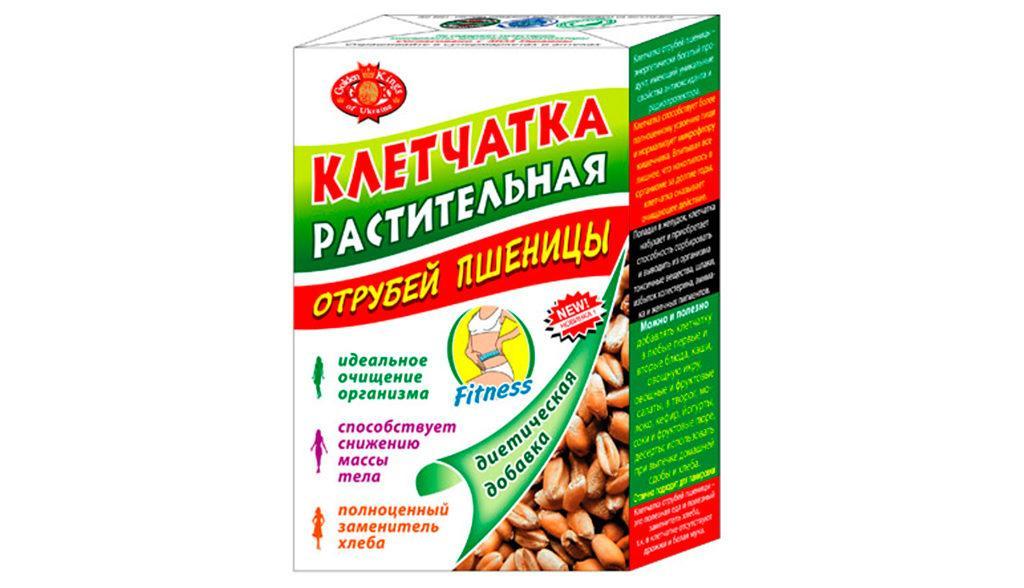
Wheat bran vegetable fiber
How to Increase Coarse Fiber in Your Diet: Helpful Tips
Statistics show that more than 60% of people do not get even half of the daily intake of dietary fiber, which negatively affects the work of the intestines, general well-being, and the state of the immune system. If a person does not receive the required amount of fiber, he has skin problems, constipation, weakness and drowsiness, and frequent respiratory infections. You don't have to eat pounds of vegetables or wheat bran to increase the amount of fiber in your diet: you just need to follow the helpful tips below.
- One glass of freshly squeezed juice with pulp for breakfast will provide half the daily value of dietary fiber and keep the intestines working.

Freshly squeezed juice with pulp
- Vegetables in the form of salads, side dishes, or simply cut into wedges should be added to every meal.
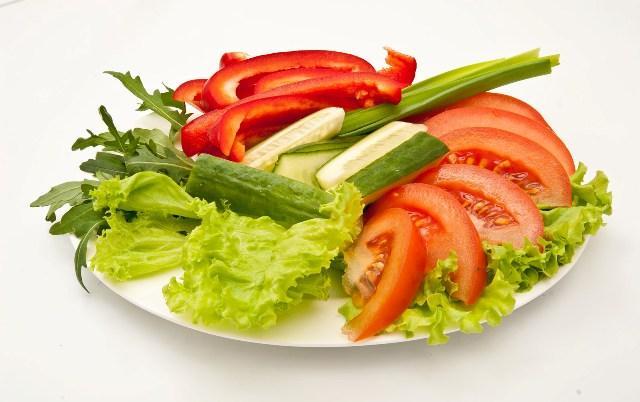
Vegetable side dish
- It is better to replace wheat flour products with whole grain products (oat or corn pasta, bran bread, whole grain crisps).

It is better to replace products made from wheat flour with oatmeal pasta.
Instead of traditional desserts for tea, in which there is often nothing useful for the body, you can use cereal bars with fruits and nuts. They stimulate the intestines and cleanse them of toxic substances.

Energy Bars
Instead of sweets, children can be given banana and peach chips, candied carrots, sweet beetroot strips (dried beets with powdered sugar).

Banana chips
Colon Cleansing & Motility Products
A large amount of dietary fiber is found not only in bran, but also in all types of cereals. Buckwheat is the champion in the content of coarse fiber plant fiber: it contains about 3-4 g of fiber (per 100 g of product). Peeled and rye flour of the second grade also has a positive effect on intestinal motility, therefore, for daily diet, it is better to choose products from durum wheat, as well as oat, corn and buckwheat flour. Wheat flour of the first and highest grade contains almost no dietary fiber, therefore it is a source of simple carbohydrates and is not suitable for the diet of people with chronic diseases intestines.

Buckwheat is a champion in coarse fiber content
Almost all fruits, vegetables, herbs and berries are also in the "leaders" among the foods that are good for the intestines and its motility. In the absence of gastritis, colitis, enteritis, gastroduodenitis and other inflammatory-dystrophic diseases the gastrointestinal tract, fruits are recommended to be eaten with the peel, after thoroughly rinsing with warm water. To reduce irritation to the mucous membranes of the stomach and intestines, hard fruits such as pears and apples can be baked in the oven with honey or powdered sugar.

Baked apples with raisins
For skin rashes, constipation, bloating and heaviness in the abdomen, fatigue and other symptoms improper bowel function in the diet, it is recommended to include the foods listed in the table on a daily basis below.
Table. Colon cleansing products.
| Name | Foods that are good for the intestines | Fiber content per 100 grams (g) | Consumption rate per day (g) |
|---|---|---|---|
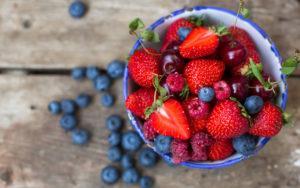 Berries |
Black currant, gooseberry, raspberry, sweet cherry, cherry, lingonberry, cloudberry, blueberry, blueberry, blackberry. | 8-11 | 100 |
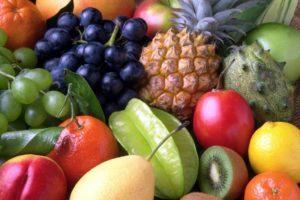 Fruits |
Kiwi, apples, oranges, grapefruits, grapes, plums, apricots. | 5-6 | 300-350 |
 Greens (mostly fresh) |
Dill, cilantro, parsley, basil, rosemary, lettuce. | 6-7 | 5-25 |
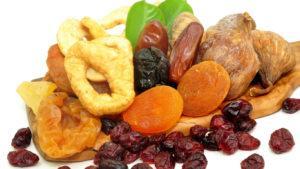 Dried fruits |
Dried apricots, dried apples, dried rose hips, dates, figs. | 5-9 | 50-70 |
 Second-grade flour products |
Rye bread, whole grain bread, bran or seed bread, pasta from spelled, oatmeal, corn flour or durum wheat, rusks, drying. | 3-6 | 200-230 |
 Porridge |
Buckwheat porridge, oatmeal, barley porridge, millet porridge, barley porridge. | 6-8 | 250 |
 Nuts |
All kinds of nuts and seeds. | 4-8 | 50 |
Certain types of fiber-rich foods can cause bloating, flatulence, and excessive accumulation and discharge of gases, therefore they must be consumed in the recommended quantities. The fiber content of vegetables and beans is about 6-15 g. The largest amount of coarse vegetable fiber is found in legumes (lentils, chickpeas, beans, peas), as well as all types of cabbage (broccoli, red cabbage, cauliflower). These foods contain a lot of puric acid and cannot be included in the diet of patients with inflammatory bowel or stomach pathologies.
Note! Vegetables containing a lot of starch (beets, carrots, potatoes) contain 10-20% more dietary fiber than other vegetables, but their use should be limited to people suffering from carbohydrate metabolism disorders, diabetes mellitus and overweight body.
5 healthiest foods for your gut
For your gut to function properly, you need to include the following foods on your menu every day. This will normalize stool, eliminate constipation, improve digestion and provide an adequate supply of substances necessary to maintain basic body functions.
Nuts
Any nuts and seeds contain a large amount of coarse fiber. They cleanse the intestines from toxins and putrefaction products, help lower cholesterol and stimulate the motility of the intestinal walls. Nuts are also rich in vitamins and mineral salts, so their use is a good prevention of vitamin deficiency and deficiency of important elements: magnesium, potassium, phosphorus, calcium and iron.

Nuts
In case of problems in the work of the intestines, it is recommended to regularly eat about 10-20 g of almonds, pistachios, macadaman or Brazil nuts. Cashews, hazelnuts, sunflower seeds and pumpkin seeds are also useful.
Important! All nuts have a high calorie content, so overweight people should eat them in limited quantities, after consulting an endocrinologist.

Endocrinologist - a specialized doctor dealing with the health of the endocrine system
Bananas
The inclusion of bananas in the diet is indicated for intestinal dyskinesia and impaired motor function. They also contain a large amount of mucus, which envelops the intestinal walls and, when mixed with feces, promotes their movement into the rectum. Bananas contain a lot of magnesium and B vitamins, so they can be used for additional nutrition for neuroses, depressive disorders, pathologies of the heart and blood vessels. They can be eaten fresh or added to casseroles, fruit salads, puddings. Banana puree is a great dessert for people with bowel disease who are forced to follow a healthy diet.

Banana puree is a great dessert for people with intestinal diseases who have to follow a healthful diet.
Note! Excessive consumption of bananas can backfire and cause constipation. The norm for an adult is 3-4 bananas per week.
Kefir
Kefir is one of the most useful foods for normalizing bowel function. It contains vitamins, minerals and beneficial kefir fungi that stimulate the growth of beneficial microorganisms in the intestines. The daily use of kefir helps to cleanse the body, normalize weight, and improve the emotional state of a person. Kefir is useful for constipation: drunk at night, the drink provides a gentle excretion of feces and the elimination of discomfort, bloating and heaviness in the abdomen.

Kefir
Note! Kefir is considered a hypoallergenic product, but with poor tolerance to this drink (including individual taste preferences) it can be replaced with natural white yoghurt, acidophilus or fermented baked milk.
Kelp
Kelp is a type of brown seaweed commonly known as seaweed. This is a real storehouse of useful components: kelp contains almost all the vitamins and minerals necessary for the functioning of vital organs. It is a valuable source of iodine and selenium, manganese and chromium, which are essential for the treatment and prevention of diabetes mellitus.

Kelp
For the intestines, kelp is useful in that it removes substances toxic to it from the body (including salts heavy metals), neutralizes free radicals and improves the absorption of beneficial elements and vitamins in a thin intestines. Some homeopaths advise taking kelp powder for different types fermentopathy, as this alga helps to quickly establish digestion.

Fermentopathies
Flax-seed
It is one of the best foods to eat regularly for good gut health. It can be used in the form of an infusion (for 1 teaspoon of seeds - a glass of boiling water), added to baked goods and salads, and cook flaxseed porridge. The main benefits of flax seeds are associated with a high content of starch and mucus, which envelops the mucous membranes and protects them from the damaging effects of various substances, including hydrogen chloride. The mucus also mixes with the stool and softens it, helping to relieve constipation and ease bowel movements.
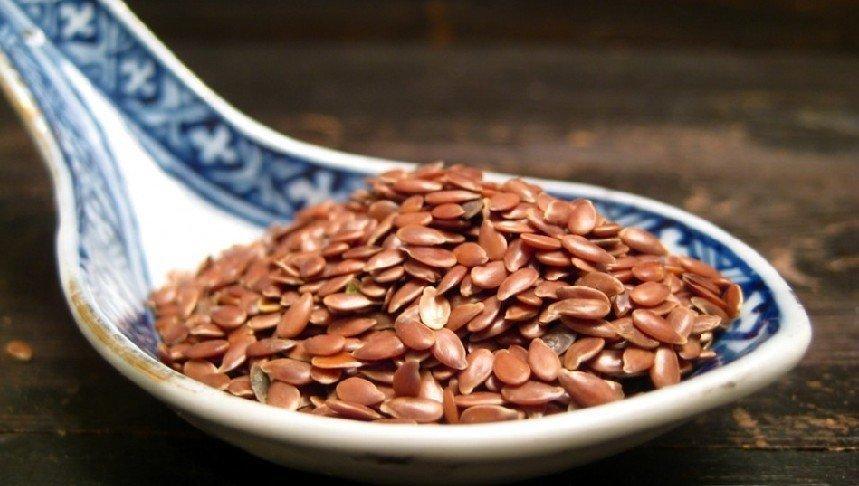
Flax-seed
Salad "Brush" for intestines
This is one of the most popular and effective salads used in health-improving and therapeutic nutrition of patients with chronic constipation, obesity and other diseases in which the functioning of the gastrointestinal path. It is prepared from simple products, has a low cost, but at the same time has a number of positive properties, for example:
- binds fats and promotes their excretion from the body;
- reduces the level of "bad" cholesterol;
- saturates the body with vitamins and mineral salts;
- stimulates the motor and evacuation function of the digestive tract;
- cleanses the intestines from toxic compounds, products of decay and fermentation, allergens;
- normalizes stool;
- increases the body's resistance to environmental pathogens.
You can include it in the menu at least every day. Salad "Brush" is especially useful for pregnant women who often suffer from constipation and indigestion in the second and third trimesters.
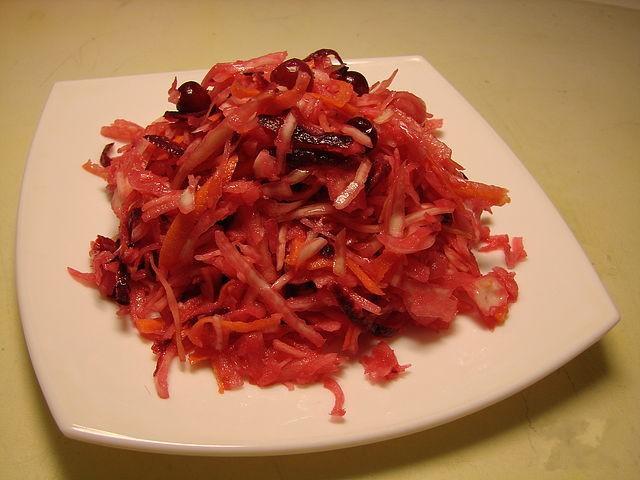
Salad "Brush"
How to cook?
Preparing a salad is very simple:
- Rinse half a head of cabbage thoroughly with running water (be sure to separate the leaves to remove all the dirt from under them);
- finely chop;
- mash the cabbage with your hands so that it gives juice and becomes softer;
- on a fine grater, grate one beet and a carrot;
- mix everything, add a tablespoon of olive oil and 10 drops of lemon juice.

Olive oil - a component of the "Brush" salad
This salad is perfect as a side dish with meat or fish for an evening dinner or for a snack between meals.
How to make your intestines work: three simple rules
For your gut to function properly, it is important not only to eat healthy and wholesome foods, but also to adhere to other lifestyle recommendations. The rules below will help to improve the functioning of the gastrointestinal tract without the use of drugs and reduce the risk of intestinal diseases (including dangerous cancers) to a minimum.
Rule one: more water!
Water is essential to prevent constipation and to facilitate the elimination of toxins and toxins from the intestines. The norm for an adult is to consume 1-1.2 liters of clean water per day. If, for example, a vegetable salad is used as the first course for lunch, this amount must be increased by another 300-350 ml. It is best to drink ordinary clean water without gas, but dried fruit compotes, berry fruit drinks and herbal teas and infusions are also suitable drinks.

Still drinking water is the best choice for gut health
Advice! You need to start your day with a glass of cool water, to which you can add a few mint leaves or a slice of lemon. Even with chronic constipation, such a measure will help to quickly establish peristalsis and normalize stools.
Rule two: more movement!
In the absence of contraindications, you can go in for swimming, aerobics, Pilates, callanetics and other types of recreational activities. If you don't have time to visit the gym, daily morning exercises and a little gymnastics during the day are enough. Walking and stretching exercises are useful for the intestines - you can engage in them at any age, even with diseases in which traditional physical education is contraindicated.

Walking is good for gut health
Rule three: less nerves!
Stress is one of the main factors of irritable bowel syndrome, colitis, enterocolitis, constipation and other intestinal pathologies. To reduce the intensity of the stress factor, it is useful to walk more, sleep a sufficient amount of time (8-9 hours), listen to pleasant and relaxing music. You can get rid of the fatigue that has accumulated during the day with a relaxing bath, massage and a cup of chamomile tea with honey.

Massage - an assistant in getting rid of fatigue
By following the above guidelines and organizing your meals properly, you can reduce the risks most intestinal diseases and cope with many digestive disorders without using medicines.

